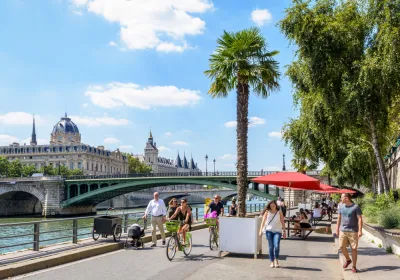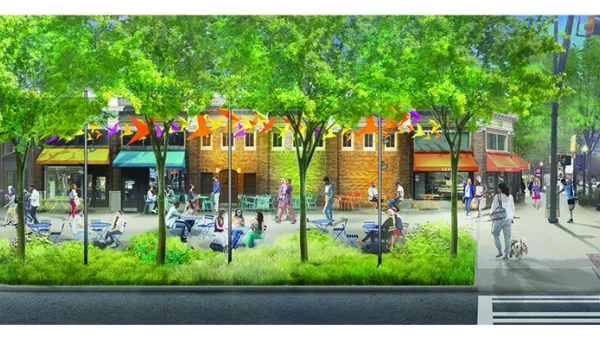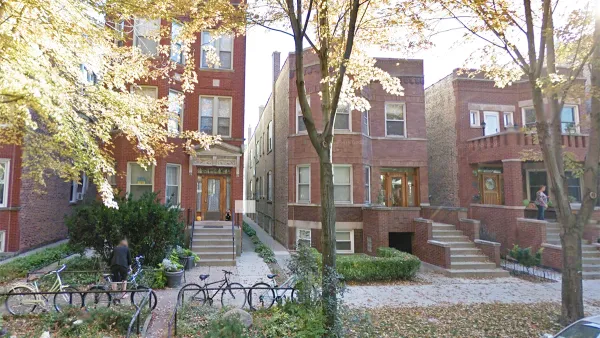The concept, touted as "hyper-local," can fail to take into account local conditions and historical inequities in American cities.

The concept of the "15-minute city" has been adopted as an aspirational buzzword by city leaders across the United States, but "there are dangers of applying a model conceived in Europe to many North American cities," writes Feargus O'Sullivan for Bloomberg CityLab. Urban designer Jay Pitter calls transplanting the idea potentially "presumptive and colonial," arguing that "it doesn't take into account the histories of urban inequity, intentionally imposed by technocratic and colonial planning approaches, such as segregated neighborhoods, deep amenity inequity and discriminatory policing of our public spaces" that are deeply embedded in American cities.
European cities, designed before mass car ownership, are more well-suited to the notion of the 15-minute city, writes O'Sullivan. The lofty goal of creating small neighborhoods where all amenities are within easy reach is "unlikely to reach all neighborhoods in many cities without drastic interventions and investments," and "simply injecting design changes such as bike lanes and parklets into a neighborhood will not reverse segregation that has been embedded into city planning."
The proposals neglect "a century of planning interventions that have actually concretized deep social divisions between people," says Pitter, calling the concept "top-down, technocratic urban planning" rather than a "systematic and holistic approach" that would more carefully consider social relationships and historic inequities. While it claims to be hyper-local, Pitter argues that implementing the approach without consideration to local conditions has the opposite effect.
FULL STORY: Where the ‘15-Minute City’ Falls Short

Analysis: Cybertruck Fatality Rate Far Exceeds That of Ford Pinto
The Tesla Cybertruck was recalled seven times last year.

National Parks Layoffs Will Cause Communities to Lose Billions
Thousands of essential park workers were laid off this week, just before the busy spring break season.

Retro-silient?: America’s First “Eco-burb,” The Woodlands Turns 50
A master-planned community north of Houston offers lessons on green infrastructure and resilient design, but falls short of its founder’s lofty affordability and walkability goals.

Test News Post 1
This is a summary

Analysis: Cybertruck Fatality Rate Far Exceeds That of Ford Pinto
The Tesla Cybertruck was recalled seven times last year.

Test News Headline 46
Test for the image on the front page.
Urban Design for Planners 1: Software Tools
This six-course series explores essential urban design concepts using open source software and equips planners with the tools they need to participate fully in the urban design process.
Planning for Universal Design
Learn the tools for implementing Universal Design in planning regulations.
EMC Planning Group, Inc.
Planetizen
Planetizen
Mpact (formerly Rail~Volution)
Great Falls Development Authority, Inc.
HUDs Office of Policy Development and Research
NYU Wagner Graduate School of Public Service




























